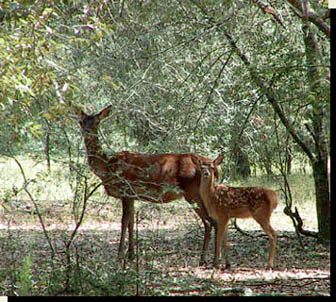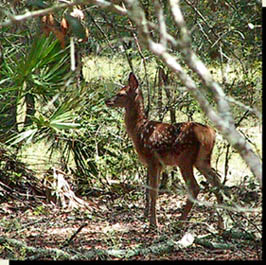
|
The
young fawn is on his own for the moment and is keeping a careful eye--probably
both for mom and for danger, most likely coyotes.
We know that the red deer are familiar with coyotes. The
large hinds had never been bothered by the hog dogs before, but one day a
hind charged one of our dogs, and sent him galloping back to us for protection.
That new, defensive behavior was what told us the red deer were dropping their fawns. |
Only about half of our red deer babies survived the coyotes. It's a painful
fact of nature that the majority of the young of most species do not make
it to their first year.
Predation from a variety of animals is heaviest on the small and helpless. |
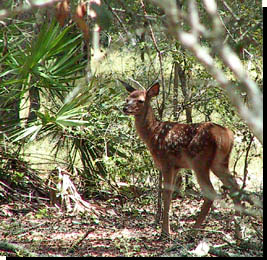 |
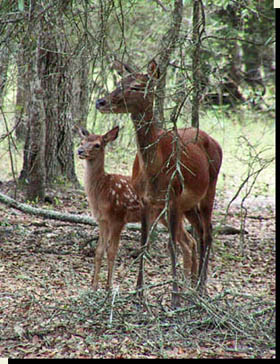 |
Over and over I saw this baby mirroring his mother's watchful scan of their surroundings.
Mom looks to the right--he looks to the right.
|
Mom looks left--he looks left. The skills he's learning are invaluable to his survival.
An animal doesn't have to be perfect at predator detection, he just has to be better than the others and a tougher target.
Predators don't want to get injured, and rather than failing at a big effort,
so that they've wasted energy and lost out on other opportunities in
the meanwhile, they prefer to go for the sure thing.
Coyotes are familiar with the individuals they stalk, and have assessed the
weakest for a target. Of course any fawn is an instant meal. |
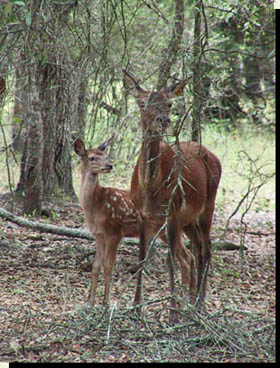 |
